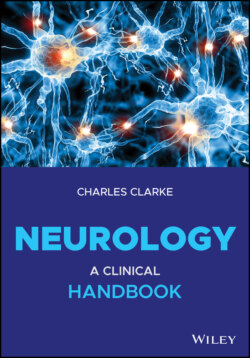Читать книгу Neurology - Charles H. Clarke - Страница 192
Cauda Equina Syndrome
ОглавлениеThe cauda equina (horse’s tail) is the leash of roots emanating from the lower end of the cord. Cauda equina compression (e.g. central L4/L5 disc) affects all lumbo‐sacral roots streaming caudally. There is loss of bladder and bowel control, buttock and thigh (saddle) numbness with weakness of ankle dorsiflexion (L4), toes (L4, L5), eversion and plantar flexion (S1). S1 reflexes are lost (ankle jerks). A central disc can progress rapidly over hours, or less, sometimes with little back pain – a neurosurgical emergency.
A lesion of the conus medullaris, the lowermost cord, such as an MS plaque can cause difficulty. Weakness, sensory loss and loss of sphincter control also occur, and with an acute conus lesion tendon reflexes can also be lost, as with the cauda equina. Extensor plantars and sensory loss typical of a cord lesion, such as a sensory level or Brown‐Séquard signs should enable distinction clinically, before imaging.
